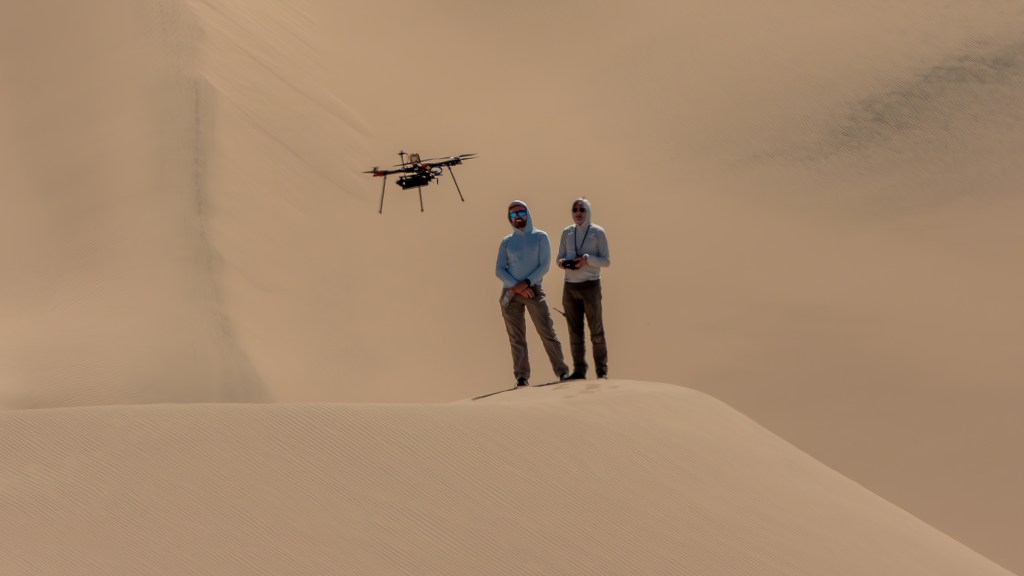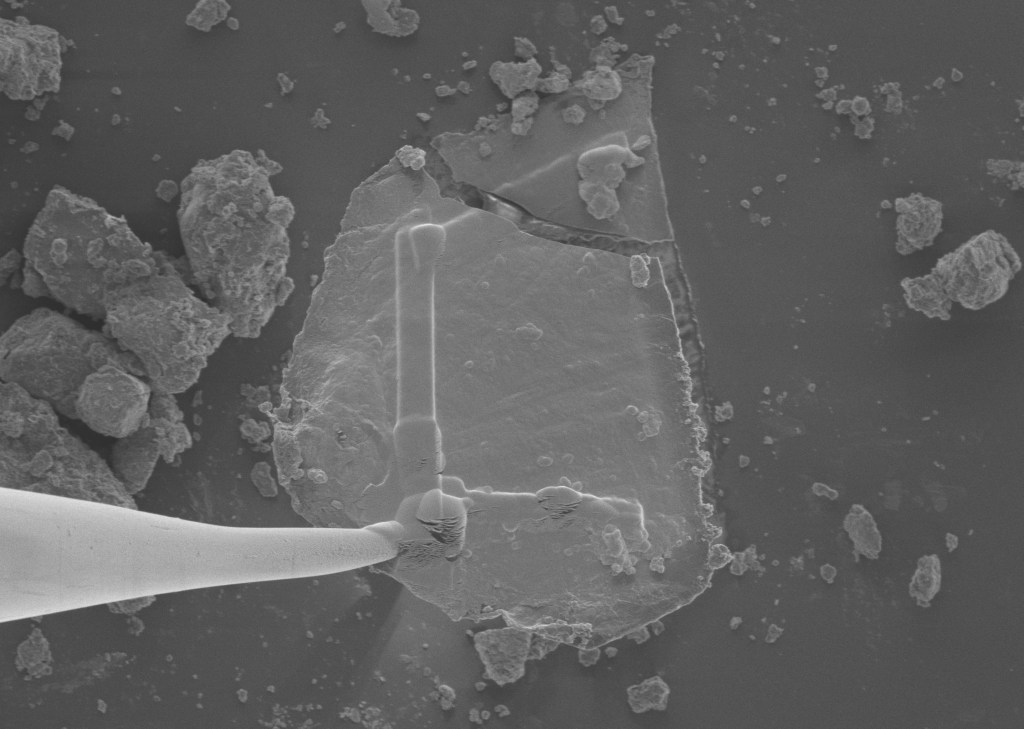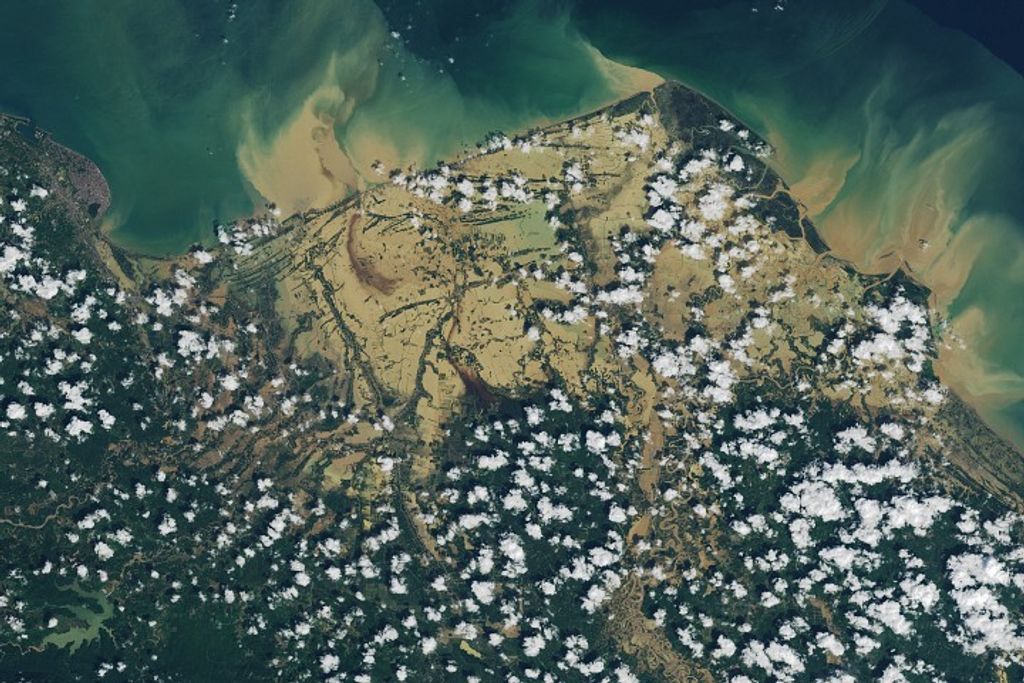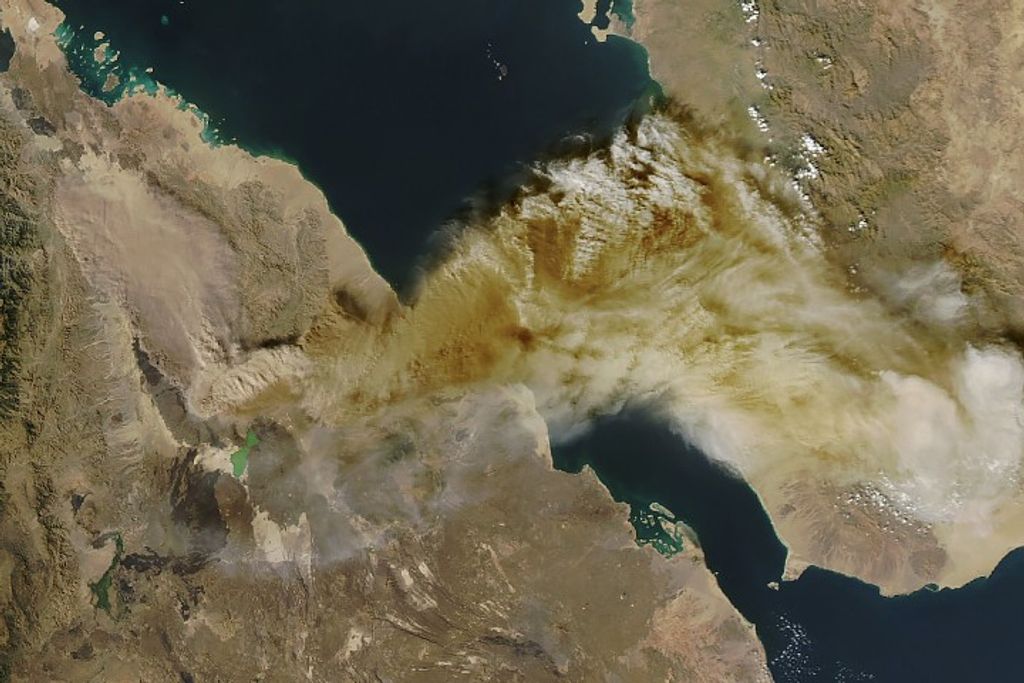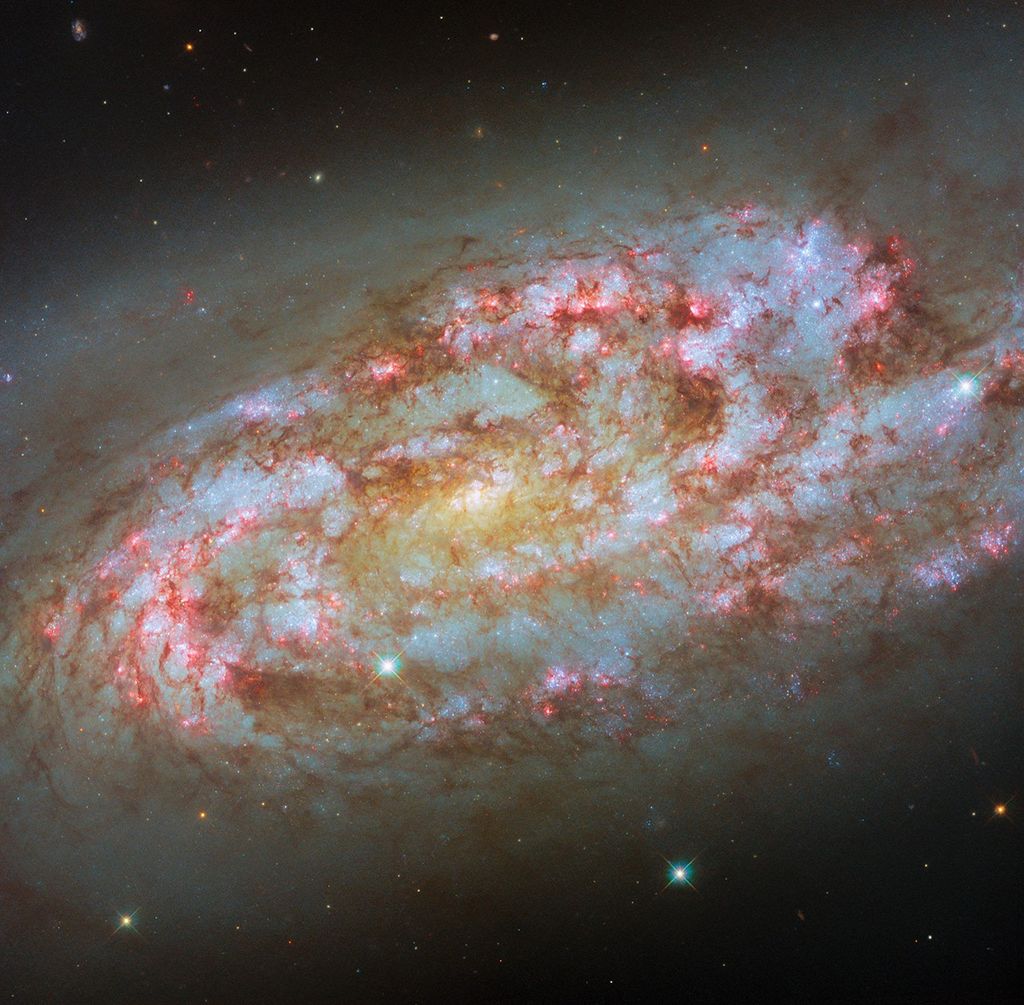Space Weather Strategy
Space Weather Strategy and Implementation Plan (PDF)
Preamble
This strategy outlines the goals and objectives of NASA Heliophysics Division for space weather. It is consistent with the goals and agency responsibilities articulated in the 2019 National Space Weather Strategy and Action Plan, the 2020 PROSWIFT Act, and the Agency’s efforts in human and robotic exploration.
Context
Understanding space weather is the domain of Heliophysics. Space weather is the applied expression of Heliophysics. In Priority 1 of the 2020 NASA Science Plan, Strategy 1.4 pertains directly to space weather:
- Develop a Directorate-wide, target-user focused approach to applied programs, including Earth Science Applications, Space Weather, Planetary Defense, and Space Situational Awareness.
Vision
Advance the science of space weather to empower a technological society safely thriving on Earth and expanding into space.
Mission
Establish a preeminent space weather capability that supports robotic and human space exploration and meets national, international, and societal needs by advancing measurement and analysis techniques, and by expanding knowledge and understanding for transitioning into improved operational space weather forecasts and nowcasts.
Goals
NASA plays a vital role in space weather research by providing unique, significant, and exploratory observations and data streams for theory, modeling, and data analysis research, and for operations. NASA’s contributions to observing and understanding space weather are critical for the success of the National and International space weather enterprise. NASA has a preeminent space weather capability through the pursuit of the following goals:
SWxSA Strategy by Goal | |||
| Theme | Goal | Objective |
|
| Advance observation techniques, technology, and capability | 1.1 Identify technologies and techniques for which enhanced or future investments would produce results that significantly and positively impact space weather understanding and prediction 1.2 Create opportunities to develop observation techniques and instrumentation 1.3 Establish and sustain recurrent flight cadence and supporting infrastructure opportunities for space weather instrumentation and missions 1.4 Identify and implement the capability to ensure that real-time and latent data streams for space weather-relevant space observations are available |
|
| Advance research, analysis and modeling capability | 2.1 Identify analysis capabilities that advance space weather understanding and prediction 2.2 Establish opportunities to support the develop improved data analysis and modeling capabilities 2.3 Work with NSF and other Federal agencies to advance research and analysis capabilities relevant to space weather |
|
| Improve space weather forecast and nowcast capabilities | 3.1 Develop a structure and process that funnels basic research information to an applied focus |
|
| Transition capabilities to operational environments | 4.1 Create a pipeline that conveys the results and outputs of the NASA Heliophysics research and technology programs to a space weather proving ground environment where models and techniques are assessed 4.2 In coordination with NOAA, establish a testbed capability to transition forecasting and nowcasting models (SWPC) and transition observations and data streams (NESDIS). 4.3 Establish formal relationships between NASA and DoD to exchange data and observation capabilities, and effectively transition data, improved forecasting and nowcasting capabilities, and improved observation techniques. |
|
| Support Robotic and Human Exploration | 5.1 Advance the partnership between the Heliophysics Division and the Human Exploration and Operations Mission Directorate (HEOMD) to provide expertise on space environment conditions that enable the health and safety of astronauts beyond low-earth orbit 5.2 Provide key real-time data streams to the Agency for forecasting, nowcasting, and anomaly resolution for robotic and crewed missions |
|
| Meet National, International, and societal needs consistent with Government directives | 6.1 Secure the counsel of space weather expertise within the government, academia, commercial and private sector 6.2 Provide key real-time data streams to sister agencies for forecasting, nowcasting, and anomaly resolution 6.3 Continue active participation at the Executive level with OSTP 6.4 Represent the U.S. in international space weather research fora to advance the global capability and enhance U.S. ability to meet its space weather needs |
Space Weather Implementation Plan
Introduction
The NASA Heliophysics Space Weather Implementation (H-SWI) Plan is a living document that is driven by the above-mentioned strategy, and adjusts as the Agency, national, international, and societal needs evolve. The codification into law of the role of NASA in the national space weather effort provides direction and flexibility to work with sister agencies and the research and user communities to implement the policy as identified in the PROSWIFT Act, to “prepare and protect against the social and economic impacts of space weather phenomena by supporting actions to improve space weather forecasts and predictions including: sustaining and enhancing critical observations identifying research needs and promoting opportunities for research-to-operations and operations-to-research collabo operations both within and outside of the Federal Government, advancing space weather models, engaging with all sectors of the space weather community, including academia, the commercial sector, and international partners, and understanding the needs of space weather end users.“
A summary of the space weather plan follows in three sections:
- Implementing Entities and Groups;
- Space Weather Strategy Impact Matrix;
- Implementation Actions.
The full details of the space weather implementation plan are captured in a spreadsheet that is expected to evolve with the strategy.
Implementing Entities and Groups
In order to effectively implement the H-SWI plan, different entities or groups are identified that will coordinate the various actions that are articulated in this plan. These entities are the:
- Heliophysics Division Space Weather leadership; Space Weather Lead and Program Executive;
- Space Weather Council (SWC); a FACA subcommittee to the Heliophysics Advisory Committee composed of academia, commercial sector, and user communities;
- Space Weather Science Application (SWxSA) Team; a working group composed of HPD and members of the NASA field centers and JPL that have work directly relevant to space weather – GSFC, LaRC, MSFC, JSC, and Ames;
- Interagency Framework Steering Committee (IFSC); a committee composed of representatives of federal agencies that are relevant to space weather – NASA, NSF, NOAA, DoD, USGS, FAA;
- SMD-HEOMD Working Group (SHWG); a working group focused on space weather and radiation relevant to human exploration composed of civil servants serving under HEOMD and SMD at HQ and relevant field centers.
NASA Space Weather Strategy Impact Matrix
The effectiveness of the NASA space weather strategy is measured by the extent to which it contributes to advanced understanding of space weather and enables improved forecasting and nowcasting for key impact areas. The correlation of the NASA space weather strategy to key space weather impact areas is shown in the matrix below. This space weather strategy/impact decoder table aids to track needs, map progress, and focus investments for each strategic goal and area of impact.
Implementation Actions
The actions identified to implement the NASA Heliophysics Space Weather are summarized below:
1.0 Observe: Advance observation techniques, technology, and capability
1.1 Identify technologies and techniques for which enhanced or future investments would produce results that significantly and positively impact space weather understanding and prediction
ACTION: Release Request for Information for Space Weather Instruments and Missions for Science (SWIMS) – released in 08/2020. Coordinate through the SWxSA Team to leverage efforts in the community through meetings, workshops, gap analysis and focused teams to collect and assess relevant capabilities and areas of focus for space weather.
1.2.Create opportunities to develop observation techniques and instrumentation
ACTION: Create SWxSA Technology line – to be initially coordinated through the HPD Technology Office or associated flight program office.
1.3.Establish and sustain recurrent flight cadence and supporting infrastructure opportunities for space weather instrumentation and missions
ACTION: Create SWxSA Mission Line with the goal of achieving robust space weather capabilities (from ground and space, including real-time data) for the nation – Initially coordinate rideshare opportunities through the SMD Rideshare Program with ROSES and flight programs (LWS, STP, Explorer).
1.3.1.Develop and launch a NASA-led pathfinder mission that contributes significantly to the National space weather enterprise
ACTION: Release AO for a SWxSA Mission of Opportunity
1.4.Identify and implement the capability to ensure that real-time and latent data streams for space weather-relevant space observations are available
ACTION: Assess and establish a real-time data downlink network working with international and commercial partners. Work with missions in development in HPD.
2.0 Analyze: Advance research, analysis and modeling capability
2.1 Identify analysis capabilities that would advance space weather understanding and prediction
ACTION: Coordinate through the SWxSA Team to leverage efforts in the community through meetings, workshops, gap analysis and focused teams to collect and assess relevant capabilities and areas of focus for space weather.
2.2 Establish opportunities to support the development improved data analysis and modeling capabilities
ACTION: Leverage the competed O2R effort and the actions from the HPD Archives working group. Coordinate through the SWxSA Team and with the IFSC.
2.3 Work with NSF and other Federal agencies to advance research and analysis capabilities relevant to space weather
ACTION: Coordinate with the IFSC and the SWxSA Team in response to the National Space Weather Strategy and Action Plan and the PROSWIFT Act to identify and plan future joint efforts.
3.0 Predict: Improve space weather forecast and nowcast capabilities
3.1 Develop a structure and process that funnels basic research information to an applied focus
3.1.1 Create opportunities to use existing and past observations to develop improved forecast and nowcast capability
3.1.2 Create opportunities for the scientific community and the GSFC Community Coordinated Modeling Center to test and validate forecast and nowcast models that show promise for operational environments
ACTION: For 3.1.1 and 3.1.2, the SWxSA Team will work with the IFSC and SHWG to define essential space environment quantities metrics, create inventories of existing data sets and models directly relevant to space weather, design and maintain system to assess and archive the forecasting model capabilities, establish a portal for research products to onboard candidate data and models. These efforts may include securing subject matter experts as appropriate.
3.1.3 Periodically assess the opportunity to capture new discoveries into forecasting and nowcasting models
ACTION: Coordinate assessments through the SWxSA and SWC, for new space weather forecast and nowcast capabilities.
4.0 Transition: Transition capabilities to operational environments
4.1 Create a pipeline that conveys the results and outputs of the NASA Heliophysics research and technology programs to a space weather proving ground environment where models and techniques are assessed.
ACTION: Under the space weather framework plan, coordinate with the IFSC to identify key areas of focus for space weather that need addressing and match those with LWS and O2R research and observations. Establish a short delivery-focused funded opportunity to transition operationally-viable models and data products recommended through the IFSC to space weather proving ground/test bed environments. Establish a process in CCMC to ingest these efforts in a shared proving ground environment as described in the framework plan.
4.2 In coordination with NOAA, establish a testbed capability to transition forecasting and nowcasting models (SWPC) and transition observations and data streams (NESDIS).
ACTION: Establish short delivery-focused funded opportunity to transition operationally-viable models and data products recommended through the IFSC to space weather proving ground/test bed environments.
4.3 Establish formal relationships between NASA and DoD to exchange data and observation capabilities, and effectively transition data, improved forecasting and nowcasting capabilities, and improved observation techniques.
ACTION: Under the guidance of the National Space Weather Strategy and Action Plan and the PROSWIFT Act, establish MOU’s with DoD and other agencies to implement this action. Continue to coordinate research efforts as a matter of course.
5.0 Support: Support Robotic and Human Exploration
5.1 Advance the partnership between the Heliophysics Division and the Human Exploration and Operations Mission Directorate (HEOMD) to provide expertise on space environment conditions that enable the health and safety of astronauts beyond low-earth orbit
ACTION – Work through the SHWG.
5.1.1 Develop Earth-independent observational and model assessment capabilities needed for on-board space environment forecasting on long-duration crewed missions
ACTION: Establish through the SHWG common forecast definitions for deep space human exploration. Engage the SWC to review the Space Weather Gap Analysis and the NESC Space Environment Report, recent O2R research results, within the context of the National Space Weather Strategy and Action Plan, PROSWIFT and, the Gateway long-term strategic plan, to make recommendations for the SHWG and the Moon2Mars efforts. See Action 2.2
5.1.2 Identify opportunities to manifest space observation capabilities to improve forecasting of space environment in support of space exploration.
ACTION: Identify future space weather payloads that leverage the Gateway architecture, reference Gateway Strategy Annex 3 as a guide, – work through SHWG and Gateway Payload Coordination Working Group – See action 1.1, 1.2
5.1.2.1 Deliver Gateway HERMES payload and establish a Science Operation Center
ACTION: HERMES Payload delivery summer 2021, Science Operations Center being stood up. Coordinated with the ESA ERSA Science Working Group
5.1.2.2 Establish a competed HERMES science team to conduct science investigations
ACTION: HERMES Interdisciplinary Science Team proposals due 2/17/2021
5.2 Provide key real-time data streams to the Agency for forecasting, nowcasting, and anomaly resolution for robotic and crewed missions
ACTION: Support/Develop systems (perpetual archive) to collect, process, and analyze data from a variety of resources, which will include customized data output to integrate with models to perform a nowcast and forecast – coordinated with the Archive Strategy. Develop a NASA Ground Station Network with international partners to support real time data streams from including deep space missions, including current and future missions that may provide real-time data – see Action 1.4
6.0 Partner: Meet National and International needs consistent with U.S. Government directives
6.1Secure the counsel of space weather expertise within the government, academia, commercial and private sector
6.1.1 Seek advice of the NASA Heliophysics Advisory Committee (HPAC) on matters relevant to space weather
ACTION: Establish Space Weather Council as a subcommittee to the HPAC – in process
6.1.2 Secure the results of a NASA focused gap analysis of space weather knowledge, observational and data capability, and forecasting and nowcasting capability
ACTION: Conduct NASA space weather science gap analysis – in progress, report due Spring 2021. Plan for another gap analysis no earlier than 2027.
6.1.3 Engage NASEM on matters relevant to space weather
ACTION: Sponsor the NASEM Space Weather Infrastructure Workshop Part 2, provide background input for upcoming Solar and Space Physics Decadal Survey
6.2 Provide key real-time data streams to sister agencies for forecasting, nowcasting, and anomaly resolution
ACTION: continue support of relevant NASA science mission real-time data streams, and identify future possibilities – see Action 1.4
6.3 Continue active participation at the Executive level with OSTP
6.3.1 Partner with other Federal Agencies to achieve the objectives of the National Space Weather Strategy and Action plan
ACTION: Establish IFSC, prepare Quad Agency MOU to transition research to operations, reference role of NASA is the PROSWIFT Act – See Action 4.0
6.4 Represent the U.S. in international space weather research fora to advance the global capability and enhance U.S. ability to meet its space weather needs
6.4.1 Provide leadership to the UN COPUOS space weather activities
ACTION: Annually attend the COPUOS and engage related space weather activities
6.4.2 Partner with international agencies to further the capability of space weather forecasting/nowcasting
6.4.2.1 Coordinate with ESA for NASA participation in the Lagrange mission
ACTION: Work with ESA to provide a science instrument of opportunity
6.4.2.2 Coordinate with CSA for NASA participation in the Arctic Observation Mission
ACTION: work with CSA to provide a science instrument of opportunity
6.4.2.3 Coordinate with other space agencies as the opportunity arises and is appropriate, to include the establishment of an International Agency Space Weather Coordination Group
ACTION: Assess and establish, if viable, an international space agency space weather coordination group to strategically coordinate space weather research and operational efforts. Support UNOOSA and COSPAR to advocate for research efforts such as ISWAT, participate in international SmallSat for space weather activities, engage in international space weather roadmaps, etc.
">">">

